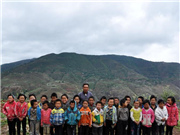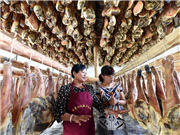

II. General Requirements and Major Targets and Policies for Economic and Social Development in 2015
2015 is a crucial year for comprehensively deepening reform, the first year for comprehensively advancing the law-based governance of the country, and the final year for completing the tasks set out in the Twelfth Five-Year Plan. In carrying out our economic work in 2015, we must comprehensively implement the guidelines of the 18th National Party Congress and the third and fourth plenary sessions of the 18th CPC Central Committee; take as our guide Deng Xiaoping Theory, the important thought of Three Represents, and the Scientific Outlook on Development; and fully implement the guiding principles from General Secretary Xi Jinping’s major speeches. We must adhere to the general principle of making progress while ensuring stability; stay centered on improving the quality and performance of economic development; proactively adapt to the new normal in China’s economic growth; keep the economy performing within an appropriate range; and give high priority to transforming the growth model and making structural adjustments. We must also tackle hard problems in reform; highlight the importance of innovation as a force to drive development; strengthen risk prevention and control; work harder to ensure people’s wellbeing; and strive for sound and steady economic development as well as social harmony and stability.
We will adhere to the general principle of making progress while ensuring stability. The focus of our efforts to ensure stability will be placed on keeping economic performance stable, making sure that there are no major fluctuations in growth, employment, and prices, and precluding the emergence of regional and systemic financial risks. The focus of our efforts in making progress will be put on making economic structural adjustments and deepening reform and opening up to ensure that achievements are made in transforming the growth model and promoting innovation-driven development.
To meet these requirements, and in keeping with the goals set out in the Twelfth Five-Year Plan, we have set forth the main targets for economic and social development in 2015 as follows:
— Ensuring that the economy grows steadily
GDP is projected to grow by approximately 7%. In setting this objective, we have mainly taken the following into account: This growth rate accommodates the new normal in economic development, reflects China’s current potential for economic growth, is in line with market expectations, and can be achieved with hard work. At the same time, the recent few years’ correlation between economic growth and structural changes on the one hand and increases in employment on the other hand shows that an economic growth of around 7% would help create more than 10 million urban jobs. We can do better than this if we promote reform and structural adjustments through practical work.
— Maintaining the basic stability of overall prices
The CPI is expected to increase by around 3%. In setting this objective, we have mainly taken the following into account: The prices of major commodities in the international market may continue to remain low, there is an ample supply of main commodities at home, some manufacturing industries are suffering from a combination of overcapacity and sluggish demand, and there will be continuing weakness in the overall level of prices. In addition, we have also set this target to leave space for price reform.
— Improving the quality and performance of the economy
The systems and mechanisms for promoting innovation will be gradually improved, and R&D spending will be steadily increased. The contribution of the value-added of strategic emerging industries and the service sector to GDP will continue to increase, and the transformation and upgrading of traditional industries will be accelerated. The new type of urbanization will be carried out vigorously, and development between different regions will be better coordinated. Both energy consumption and carbon dioxide emissions per unit of GDP will be cut by at least 3.1%. Chemical oxygen demand will be reduced by around 2%, ammonia nitrogen emissions by around 2%, sulfur dioxide emissions by around 3%, and nitrogen oxide emissions by around 5%.
 |  |
Day|Week

 Tsinghua junior makes over 10,000 yuan a day by selling alumnae's used quilts
Tsinghua junior makes over 10,000 yuan a day by selling alumnae's used quilts Graduation photos of students from Zhongnan University
Graduation photos of students from Zhongnan University A school with only one teacher in deep mountains
A school with only one teacher in deep mountains Glimpse of cultural heritage "Xilankapu"
Glimpse of cultural heritage "Xilankapu" Homemade cured hams in SW China
Homemade cured hams in SW China Breathtaking buildings of W. Sichuan Plateau
Breathtaking buildings of W. Sichuan Plateau Graduation photos of "legal beauties"
Graduation photos of "legal beauties" Top 10 most expensive restaurants in Beijing in 2015
Top 10 most expensive restaurants in Beijing in 2015